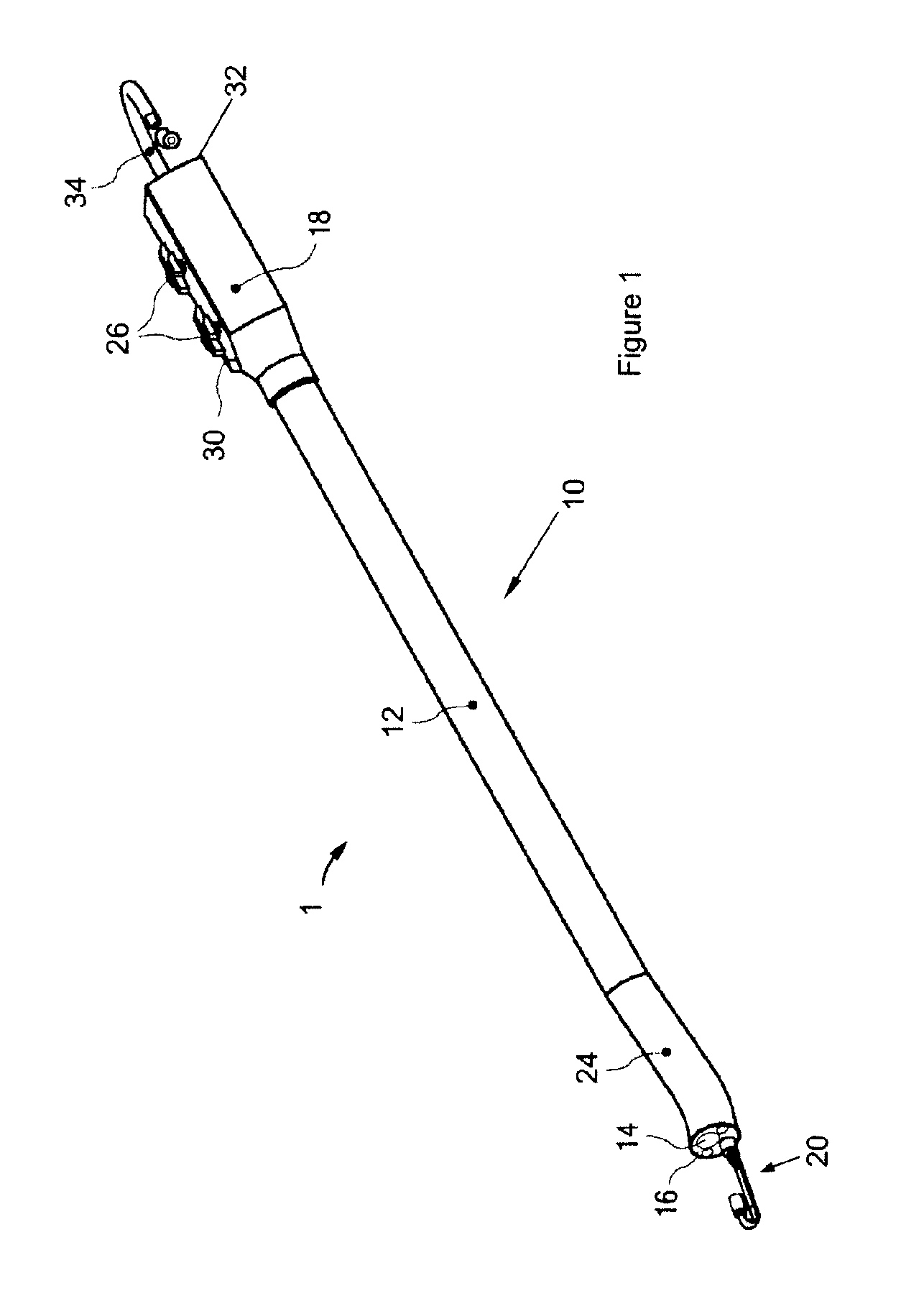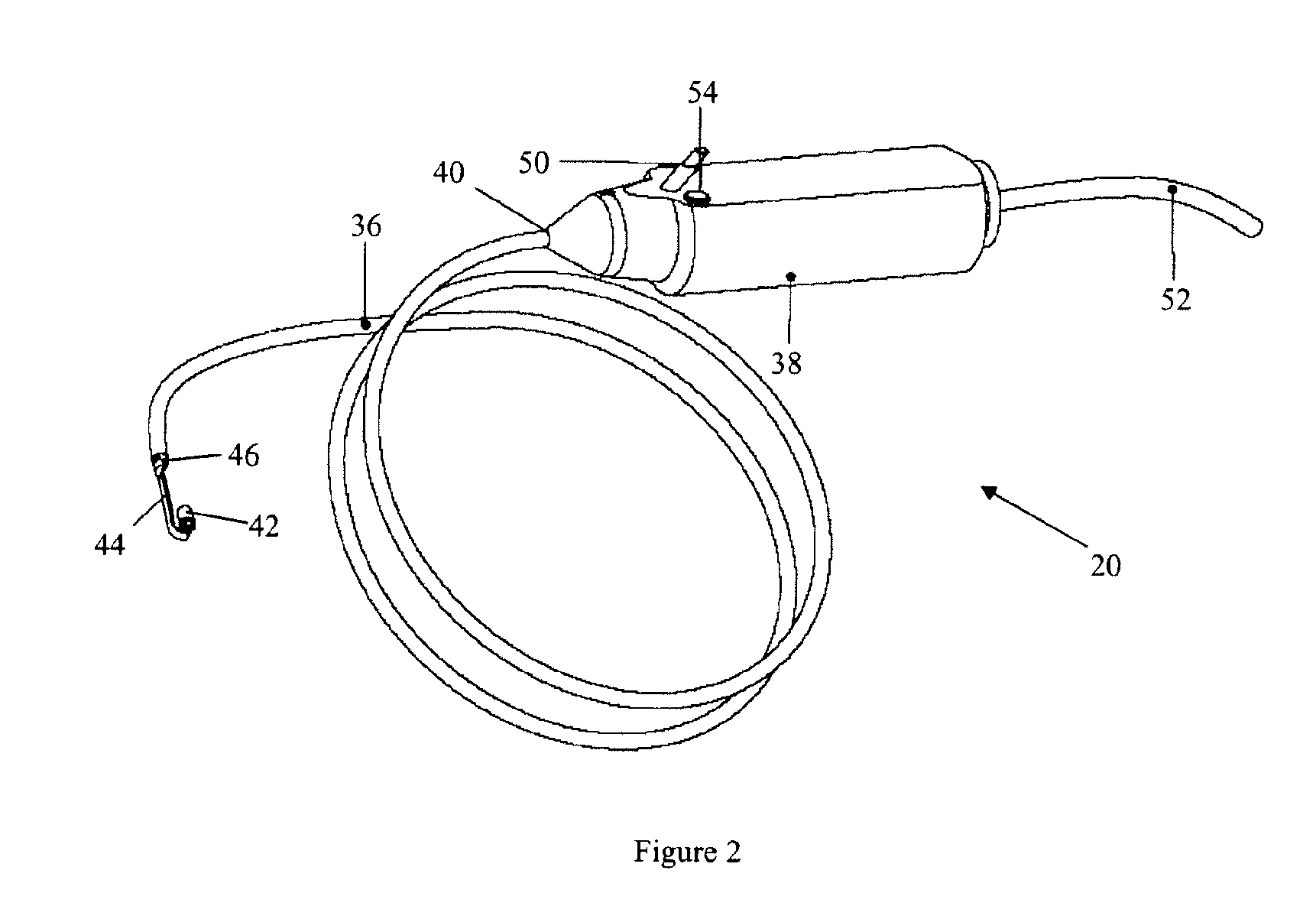Endoscope Assembly and Method of Performing a Medical Procedure
a technology of endoscope and endoscope, which is applied in the field of endoscope assembly and a medical procedure, can solve the problems of preventing the instrument from reaching, adding discomfort, complications, and risks to the patient, and achieving the effect of convenient handling
- Summary
- Abstract
- Description
- Claims
- Application Information
AI Technical Summary
Benefits of technology
Problems solved by technology
Method used
Image
Examples
Embodiment Construction
[0048]FIG. 1 illustrates a first exemplary endoscope system 1 of the present invention. This endoscope system 1 can be used in a variety of medical procedures in which imaging of a body tissue, organ, cavity or lumen is required. The types of procedures include, for example, anoscopy, arthroscopy, bronchoscopy, colonoscopy, cystoscopy, EGD, laparoscopy, and sigmoidoscopy.
[0049]The endoscope system 1 of FIG. 1 includes a main endoscope 10 and a minor endoscope 20. The main endoscope 10 includes an insertion tube 12, a main imaging device 14 disposed at the distal end 16 of the insertion tube 12 (FIG. 3), and a control handle 18 connected to the proximal end of the insertion tube 12. The minor endoscope 20 is disposed at the distal and proximal ends of the insertion tube 12 and inside the insertion tube 12.
[0050]In the main endoscope 10, the insertion tube 12 may be detachable from the control handle 18 or may be integrally formed with the control handle 18. The diameter, length and f...
PUM
 Login to View More
Login to View More Abstract
Description
Claims
Application Information
 Login to View More
Login to View More - R&D
- Intellectual Property
- Life Sciences
- Materials
- Tech Scout
- Unparalleled Data Quality
- Higher Quality Content
- 60% Fewer Hallucinations
Browse by: Latest US Patents, China's latest patents, Technical Efficacy Thesaurus, Application Domain, Technology Topic, Popular Technical Reports.
© 2025 PatSnap. All rights reserved.Legal|Privacy policy|Modern Slavery Act Transparency Statement|Sitemap|About US| Contact US: help@patsnap.com



